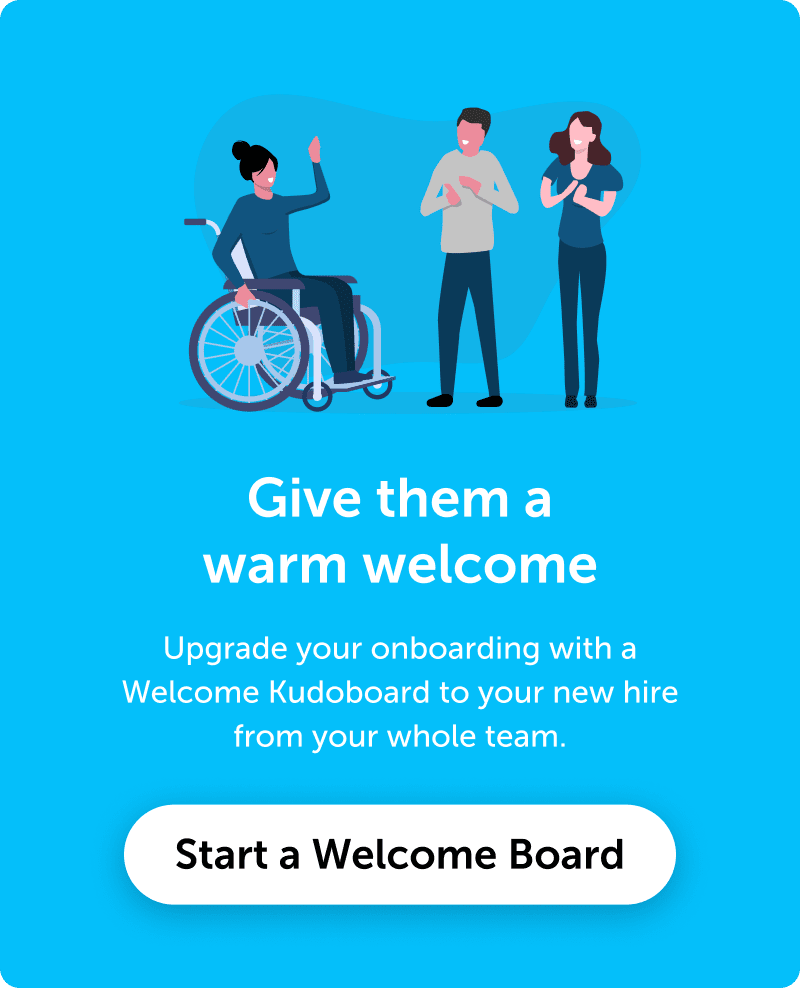Nearly 4 million Americans changed jobs in 2021. How many of them were your employees? Employee retention is a more pressing issue than ever with the Great Resignation, rising inflation, and the cost-of-living increasing nearly everywhere. Employees are curious about other jobs and always looking for something that might be a better fit.
Unfortunately, high levels of employee retention will cost companies millions of dollars this year. Replacing your existing employees will drain time and money. Today we’re breaking down what you need to know about employee retention and some employee retention goals you can set to chart a stronger course.

What is Employee Retention?
Employee retention is your organization’s ability to keep workers gainfully employed at your company for an extended period of time. Employee retention is about how many of your employees stay—and for how long. Employee turnover is a related metric, measuring how often you are hiring new employees.
Employee retention is an important diagnostic tool because it can be linked with long-term prosperity, quality, and of course, the bottom line. To put it simply: companies with great employee retention are more successful and have a better employee experience. The costs of employee turnover are high, and they are not just financial.
Read more: Employee Retention 101
What is the cost of Employee Turnover?

Losing an entry-level employee can cost up to 50% of their yearly salary, and losing a highly technical or senior employee can cost more than 125% of their yearly salary.
LinkedIn
Why does employee turnover cost so much? Here are some expected (and unexpected) reasons that employee turnover will cost you:
- Replacement hires negotiating higher salaries & benefit packages
- Lost time to hiring
- Decreased productivity as colleagues and new hires cover work for departed employees
- Burning out existing employees taking on extra work
- Delayed deadlines and deliverables
- Turnover contagion: other employees also leaving or considering departure
- Severance packages
- Exposure to risks of potential lawsuits
- Deteriorating company culture
It’s important to consider all of these potential costs and figure out exactly how much risk you can afford when it comes to employee retention.
Employee Retention Objectives
In order to retain and engage your employees, you must truly care about them. No strategy will overcome a lack of empathy or appreciation for your employees.
Zoomshift
Employee retention has one major goal: to keep your talented employees working effectively and happily at your company. But there are a variety of more specific objectives that tie into employee retention that may be worth a closer look and careful measuring as a part of your overall employee retention strategy.
Productivity
Employee turnover is a direct threat to productivity. Hiring takes an enormous amount of time and energy across many job roles. Hiring managers give up hours of productive time usually focused on their key contributions just to create job descriptions, post job openings, filter candidates, conduct interviews, navigate salary negotiations, and onboard a new employee—all while trying to fill the shoes of the departed employee they’re replacing!
When your entire team is regularly shuffling to pick up the responsibilities of employees who have left the company, everyone suffers. Even once you’ve effectively replaced the departed employee, it takes time to fully ramp to productive work. If your employee turnover is high, your productivity is under constant attack.
Improving your employee retention strategy has a dramatic effect on your company’s productivity, as employees are able to do their jobs uninterrupted with confidence in their coworkers. Managers minimize the hours lost to hiring and onboarding, and everyone gets to focus on their own job descriptions.
Reduced Hiring & Training Time
Onboarding a new employee is a bit of a headache—anyone who tells you otherwise is lying to you. Depending on the level and complexity of the role, hiring alone can take months. Do you have months of extra effort and time to dedicate to hiring? No! Especially not if it’s happening every few months with increased employee turnover.
Employee onboarding is another large time expense, though it may be distributed across HR and the hiring team. It can take at least a week, and at most a whole quarter, to get a new employee to a place of mastery in their new role. During that time, multiple team members dedicate hours to training, assisting, and monitoring the new employee’s work.
When everyone gets to focus on their own jobs and objectives, your business can really hit its stride.
Improved Morale

Only in the rarest of occasions is an employee leaving 100% positive. Morale takes a hit anytime an employee leaves—whether by the company’s choice or their own volition. If the employee was terrible, there can be an accumulation of bad feelings that don’t immediately disperse. If the employee is leaving for a great reason (to pursue a dream or for a once-in-a-lifetime job offer), even the most supportive of coworkers will feel a sense of loss and curiosity.
Whenever an employee leaves, it begs the question: is the grass greener on the other side? What will my life look like at this company without X? Should I be looking for another role? Is this company culture working for me?
Add in the aforementioned workload of covering for an unfilled role, the harrowing task of hiring, and the slog of training a new employee… it’s a lot for employees. Especially if they were already wondering about their place.
Improving your employee retention means fewer disruptions to the smooth sailing of employee morale. Employee turnover can become a bit of a domino effect, with one person prompting the entire team to question their loyalty.
Improved Customer Experience
If your business needs a flawless customer service experience for success, then employee retention is a top-tier priority. The longer your employees stay with the company, the better equipped they are to handle the day-to-day challenges of customer service. They’ve put in the time to learn the ins and outs, and high levels of company loyalty lead to more effective customer service.
Employee turnover means your customer service can be stretched pretty thin, and newer hires may not always know enough to provide excellent service. Disillusioned veteran employees may not be much better. In contrast, happy and engaged employees provide the absolute best customer experience that is your company’s lifeblood.
Retained Talent
A huge part of a successful employee retention strategy is honing in on the employees that you absolutely cannot afford to lose. We’ve established that losing even a single employee is costly, but of course, some employees are simply more essential. If your business is developing a whole new web application, losing your head of engineering is far more devastating than a sales associate leaving for a more lucrative job.
Employee retention is particularly concerned with the “heavy hitters,” as the loss of these roles can be particularly destructive. When you have strong employee retention strategies that target high-value roles, you will see those employees staying longer and contributing more effectively. Your company culture will improve organically as high-quality employees grow and stay in the organization.
Employee Retention Metrics

It’s not real until it’s tracked. Until you know what your employee retention rate is or what a new hire costs you, you don’t have the full picture of your company’s employment practices. We’ll break down some important metrics to begin tracking so that you can make the best decisions for your business.
Employee Retention Rate
Employee Retention Rate = % of employees who have stayed with the company during the selected time period
You can calculate this rate by taking the number of employees you had at the beginning of the year and dividing it by the number of existing employees (retained employees). To accurately calculate retention, you only count the employees who have stayed, not any new hires.
For example, let’s say your company started the year with 500 employees and finished the year with 520 employees, and 40 of those were new hires. That means 480 employees stayed through the year. You divide 480/500 and multiply by 100 to get the percentage rate—96% annual retention rate.
Successful organizations report employee retention numbers of around 90%. Our theoretical company mentioned above is VERY successful with its employee retention strategies. When you start dipping below that 90% benchmark, it’s time to start addressing potential issues.
Ask your human resource division to start tracking your employee retention as a relevant metric—and you don’t have to wait for annual reports. Quarterly employee retention can also be insightful for your organization.
Employee Turnover
Employee turnover rate = % of employees who have left the company during the selected time period
Employee turnover is the inverse of employee retention. Employee retention is about who is staying, while employee turnover is about who is leaving. They are essentially the same metric but can be presented to express different claims. If employee retention is low, you might present the statistic as a particularly high employee turnover rate to highlight that people are leaving.
You can calculate the employee turnover rate by taking the number of employees who left divided by the original number of employees, then multiplying by 100 for the percentage.
It may be particularly useful, as your company grows, to track employee turnover across departments. Certain departments with higher employee turnover may need additional support and training to improve employee retention.
Employee Satisfaction

How happy are your employees? Employee satisfaction surveys can be informative for companies wanting to improve employee experience and retention. Seeking employee feedback with some regularity can help you solve problems before they become disasters—particularly with employees who would be difficult and costly to replace.
There are many platforms for measuring employee satisfaction and engagement, or you can informally request feedback through manager one-on-ones or quick surveys. Track average employee satisfaction company-wide and on specific teams to predict and solve retention issues earlier.
Time-to-Onboard
Onboarding employees is a significant factor in employee success—and therefore retention. Tracking the amount of time it takes to get an employee fully ramped can be illuminating for hiring managers and HR teams alike. There’s no “right” answer to how long it should take to onboard, but streamlining the process will benefit everyone.
Create a system of feedback so you know when employees feel and perform like the ideal employee for the job description. Tracking how long that takes for different roles, different departments, and during different quarters can help you understand dips in your productivity.
Compensation Market Rates
You may feel like you know what your employees are being paid, and you may feel that it’s fair and competitive. But do you actually KNOW? You don’t have to look far to find someone with an anecdotal record of a boss who promised a raise that never came, or the manager who didn’t realize they were the only one without stock options on the entire team.
If you want to improve your employee retention you absolutely have to know the full compensation package for every single employee.
A total compensation package can include:
- Salary
- 401(k) contributions
- Equity
- Insurance
- Bonuses
- PTO
- Profit-sharing
- Remote or hybrid work options
- Other benefits and perks
Most companies have a standardized benefit package, but things like salary, equity, and bonuses can vary across roles and departments. Carefully document and keep handy a full report of employee compensation packages, and review it often.
Underpaying your employees is a recipe for regrettable attrition. Leaving a company for a job with better pay and benefits is common, and the unfortunate reality is that you could have retained that employee with a raise or retention bonus that is far more affordable than replacing them.
Conduct regular market research to determine what your employees could be getting at similar roles in another company, and perform market calibrations to keep their compensation competitive. Make sure to calculate additional factors such as local cost-of-living and inflation rates.
PTO Metrics
Americans left 33%, or 5.6 vacation days unused in 2020. – U.S. Travel Association
Unused PTO is a huge red flag for your business. You may think you’re getting a great deal by having your employees working even more for your business, but it’s a ticking time bomb. Employees who aren’t taking PTO are often afraid to due so due to toxic workplace culture, an over-demanding boss, or skewed work-life balance. When your people aren’t taking PTO, they’re on the fast track to burnout.
Many companies offer unlimited PTO, which can be incredibly helpful. However, whether you offer unlimited PTO or they have a negotiated number of days to take each year, it won’t do you any good if employees aren’t taking the time. Consider creating regular reminders or training for your managers to check up on their employees’ PTO balance and encourage them to take time off regularly.
If you find that unlimited PTO isn’t being taken, or is only taken once a year in a huge burst, you might consider implementing more regular days off. For example, a manager could pick one day off a quarter or one day off a month that their whole team would take together. Sometimes employees are hesitant to take extra days off, but if your company or your team manager adds an extra day before or after a national holiday they would be very happy.
In summary, if your employees aren’t taking the time off they have been given—it’s time to make some changes or you’ll start to see employee turnover increase.
Employee Complaints
It’s not difficult to find someone who has left a job due to a terrible coworker or manager. If you have a problematic employee or manager, they might negatively impact your employee retention. An employee who faces no consequences after complaints have been made becomes a significant drain on their surrounding coworkers—who are receiving the message that the company does not care and nothing will change.
Tracking the number of employee complaints can be a proactive way to prevent employee turnover due to poor fit or burnout. Your HR or management teams can report the numbers of complaints (whether they’re about people, practices, or policies) each month or quarter, and you can keep an eye on rising numbers. If you see increasing reports, you can address them head-on before they spell disaster.
In the long run, firing or repositioning a problematic employee will save your employee retention because keeping one tough employee could mean most of the team leaving over the next year or two.
Creating Employee Retention Goals
We can’t tell you exactly which goals will work for your business—only you can decide what will work for your unique company. However, determining the causes of employee turnover and creating effective strategies can right the ship.
Evaluate the employee retention metrics we’ve outlined above and decide which might make a reasonable goal for your company. Keep it simple, with one goal per quarter and constant iteration. Improving your employee retention will improve every other facet of your business and worth every penny. We wish you the best of luck as you work to keep your highest performers this year.





